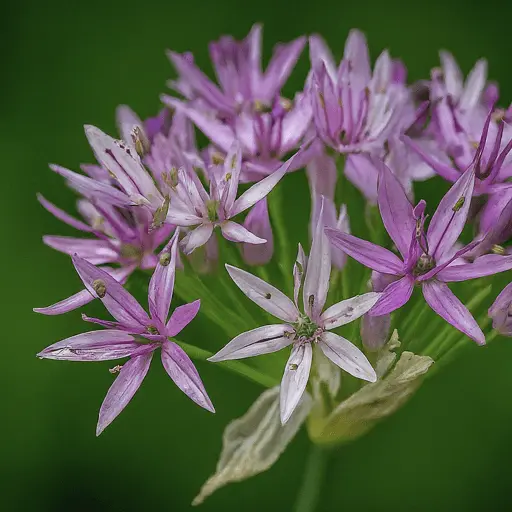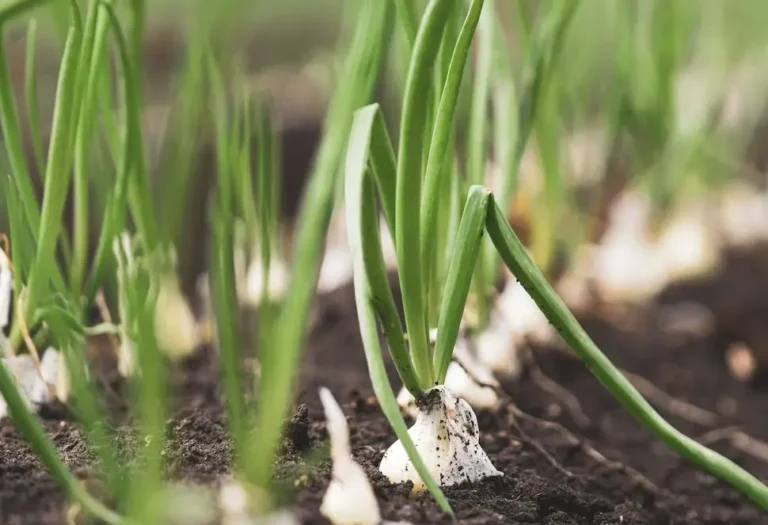Plant Society Garlic (Tulbaghia violacea): Benefits, Types, & Care
Society garlic is a vibrant, amenable, and low-maintenance plant that is known to have antimicrobial properties. It is found in South Africa and can be used to treat various ailments like fevers and colds.
Join us on a journey to reveal the beauty and benefits of society garlic. Additionally, we will walk you through the steps of cultivating society garlic, a resilient plant that flourishes in hot conditions and brings a burst of colour to your garden.
What Is Society Garlic?
Society garlic, scientifically known as Tulbaghia violacea, is a perennial plant that thrives in warm climates. It has tall stalks, green leaves, and pretty pink and purple flowers that can add a touch of elegance to any garden.
This plant looks like wild garlic chives, but its not a member of the Allium family. It belongs to a different plant family called Amaryllidaceae. However, when you eat it, you only get a mild garlic flavour, and it does not cause bad breath like garlic does.
This South African native plant is well-suited for hot regions, where scorching summer temperatures can be a challenge for many plants.
Planting Tulbaghia Violacea In Your Water Garden
In the spring, you can start to sow society garlic seeds directly into the warmed, organic-rich soil in your garden. Cover them 1/8-inch deep. Keep the soil area consistently moist, as they’ll germinate in two to three weeks. Once they grow large enough to transplant, thin the seedlings so they are spaced no closer than 18 inches for best results.
For nursery use, you need to dig a hole by using spade in the rich, well-drained soil in garden. Gently remove the plant from the container and place it in the hole. Fill it with soil, pressing firm to eliminate air pockets. Water thoroughly and add a 2-inch layer of mulch around the base.
Where to Plant Society Garlic
These plants grow very slowly and take a long time to cover the ground; therefore, they are best suited to use as an edging or groundcover. Since garlic is not winter hardy in all areas, but it can be grown in containers in cool climates.
For proper growth, do not forget to choose an area, where it can receive full sun rays in the day time. Although it can be grown in partial shade, but will be less compact and produce fewer blooms if compared to full sun.
As it has a strong aroma, especially when brushed or crushed, so it would be best suited to plant it away from high traffic zones.
Tips For Caring Tulbaghia violacea
An evergreen plant that requires low maintenance, minimal care, and a small amount of water. However, there are some areas of plant care you can focus on if you want to successfully set up society garlic in your garden:
1. Climate
The perennial grows best in USDA Hardiness Zones 7–9, but it requires protection from frost.
2. Light
According to weknowwatergardens, always choose a place where it can receive full sun or partial shade.
3. Pest control
The society garlic attracts some pests due to its strong garlic odor. Sometimes, you might find snails or slugs on the plants. To eradicate these pests, spray your plant with slug-deterrent sprays or insecticidal soap.
4. Soil and Water
Society garlic prefers organically rich, slightly sandy, evenly moist soil with good drainage. You should water it regularly to ensure the soil remains consistently moist. But avoid them from overwatering because it can damage or decay plant roots.
5. Fertiliser
For successful growth, you can add organic compost to the soil in every spring to enhance drainage and encourage flowering.
6. Pruning
Society plants generally require minimal pruning, except for the occasional removal of dead leaves and flowers.
5 Common Types Of Society Garlic
This plant is also known as pink agapanthus. They have a strong, mild garlic odor that makes them deer-resistant. You can add it to any herb or vegetable gardens to protect them from hungry animals. It can also provide ground cover and enhance overall aesthetic of your outdoor space.
Here are common types that vary in flower colour and size:
1. ‘Flamingo’:
This type of society garlic cultivar features bright green grass-like leaves and vibrant violet-purple flowers. It has a long growing season and blooms continuously throughout early spring to fall. You should grow ‘Flamingo’ as a container plant or a border plant.
2. ‘Silver Lace’:
This variety gets its name from the leaf colour, which is silver-grey with white borders. It is also known as variegated foliage with silver-grey margins. This cultivar produces beautiful lavender-pink flowers that bloom in spring and summer. The plant grows in clumping mounds and often appears in rock gardens.
3. ‘Tricolor’:
This society’s garlic cultivar features a combination of green, silver, and pink stripes on its leaves. It produces lilac-pink flowers that are perfect for cottage-style gardens or as ground cover, as it grows nearly year-round.
4. Variegata’:
Variegata is famous for its attractive variegated foliage and has blue-green leaves that feature bold white stripes. ‘Variegata’ blooms lavender-pink flowers from early summer to fall and is a popular choice for gardens due to its eye-catching appearance. You can easily grow this variety in various settings, including flowerbeds, borders, and containers.
5.Tulbaghia ‘Purple Eye’
‘Purple Eye’ is a rhizomatous perennial from the Tulbaghia Violacea type, grow 40 cm tall with long, narrow grey-green foliage. Tubular, star-shaped flowers appear in white or pale purple with a darker centre from spring to autumn. It thrives in full sun, well-drained soil, and requires regular watering while growing. Cut, faded flowers promote continuous blooming.
These are famous varieties of pink agapanthus. The unique colours and their fragrant flowers make them excellent additions to any garden.
Culinary Uses
In society, garlic is often used as a milder alternative to traditional garlic. Its leaves and flowers can be used in various culinary dishes like soups, stews, salads, and roasted meats. These leaves add a subtle, mild garlic, while the flowers can be used as a flavorful garnish.
In South Africa, the Zulu people enjoy the leaves and flowers as a leaf vegetable like spinach or as a seasoning for meat and potatoes.
Medicinal Uses
Tulbaghia violacea is a traditional herb with anti-inflammatory, antifungal, and antibacterial properties. It is used to treat various ailments, including coughs, colds, and flu.
Conclusion
So finally, you got that Society garlic is a charming and low-maintenance plant. This plant can add a touch of elegance to your garden. Its colorful flowers and subtle garlic flavour make it a versatile addition to both culinary and medical applications. Whether you’re seeking a beautiful plant or a natural remedy, society garlic is a delightful choice. Its low maintenance and numerous medicinal benefits make it a worthwhile addition to any garden.
For more detail and gardening tips visit our blog regularly.
FAQs
Yes, you can definitely Plant Society garlic in America (U.S.). Tulbaghia violacea is well-suited to warm climates and can thrive in many regions of the United States.
It is particularly hardy in USDA Hardiness Zones 7-9, which includes much of the southern and western United States.





